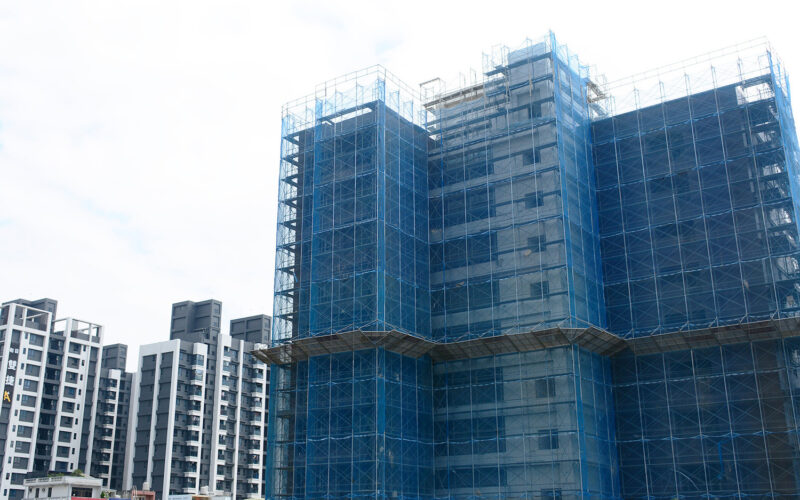The pandemic has overturned people’s home living patterns and wealth management. Not only has real estate not been threatened by the pandemic, but the number of sales and prices has risen sharply. Global luxury housing prices rose by an average of 8.2%, the highest increase since the financial tsunami. House prices in the United States in January 2021 are up nearly 5% from the same period last year.
London, UK (Business Northeast) – The pandemic has caused a significant decline in the revenue of many industries, but the prices of mainstream real estate and luxury homes have seen a clear upward trend. Overall, the covid-19 pandemic has had a positive impact on American homeownership plans in 2020. According to a survey of American adults, 28% of millennials are more interested in buying a home due to the pandemic. As a result, the average selling price of a new house in 2020 is US$389,400, and it will reach US$408,800 in 2021, a record high. In addition to mainstream real estate, luxury home prices in 46 cities worldwide rose by an average of 8.2%, becoming a new high after the financial crisis.
Many people stay at home more often or switch to WFH work mode during the pandemic. Therefore, seeking a more comfortable and healthy living environment has become one of the main reasons for the boom in housing purchases. The study pointed out that 19% of respondents have moved since the beginning of this year. Since most markets have implemented strict lockdowns in the past 18 months, acquiring more home space has become a top priority for buyers. Among them, 22% said they want to have more outdoor space as the primary motivation for moving, and 19% said indoor space is critical. The key elements are related to regional and cultural differences. For example, indoor space is a greater driving force in Asia, while in Europe and Australasia, outdoor space is a greater driving force.
Among those who have not yet moved, 20% said they are more inclined to move in the next 12 months. The most surprising thing is that more people favor the city. Globally, 38% of respondents who are more inclined to move in the next 12 months focus on urban locations, while 33% consider suburban areas. As buyers in Asia and the Middle East are particularly eager for urban life. In conclusion, the popularity of the cities here will be very high. Among those who plan to move next year, 44% and 50%, respectively, are considering using a city as a base.
The pandemic has dramatically changed the critical factors in people’s choice of property, and 71% believe that using fast broadband will be more critical. The second is followed by home offices (67%) and spaces (indoor and outdoor), but natural landscapes (55%) and flexible living spaces (55%) also rank high. However, in terms of quality of life, the focus is on health. Respondents considered the most critical factors to include proximity to green spaces (68%), air quality (65%), and access to good medical care (57%). Judging from this, health and Internet convenience have become the focus of people’s housing purchases.
In addition to mainstream real estate, global luxury housing prices also increased since the 2008 financial tsunami. According to the Prime Global Cities Index published by Knight Frank, as of June 2021, luxury home prices in 46 cities have risen by an average of 8.2%, up from 4.6% in March. Toronto was among the best in this quarter’s performance, with luxury home prices increasing 27% throughout the year. The following three rankings are occupied by major Asian cities, including Shanghai (21%), Guangzhou (20%), and Seoul (20%). Miami (19%) became fifth place this quarter. Other hotspots include cities in Canada and the United States, with an average annual price growth rate of 16% over 12 months.
The rising prices of luxury homes in major cities are closely related to each country’s economic policies and living needs. Knight Frank LLP, said that the global housing market is recovering rapidly due to the pandemic, and luxury housing is the leader. He talked about four significant factors that have stimulated the price increase of luxury homes, including low global interest rates, easing of travel restrictions, a flurry of activity ahead of the tapering of stamp duty holidays, and overall reassessment of lifestyles and commuting patterns.
In Taiwan, which has a high population density, the average price of luxury homes is still up 14.9% compared with last year, setting a new high in the past two years and squeezing into the world’s tenth-largest increase in luxury homes. Ms. Chen, who lives in the capital city of Taipei, said: “There are more and more luxury homes in Taipei City. One is more luxurious than the other. The high prices have also increased the price of the surrounding real estate market, and the pressure on people to buy houses continues to increase.”
Although rising house prices are not to be seen by the public, to improve the quality of life or the demand for capital management, buying houses has become one of the current plans of many people. Knight Frank pointed out that so far, the pandemic has pushed up housing prices, most obviously in the mainstream housing market, but now the luxury housing market in major cities has soared. Moreover, with the relaxation of travel restrictions and international buyers beginning to recognize the value of major global cities, it is expected that the third quarter growth rankings of luxury properties in London, New York, Paris, and Dubai will rise.










